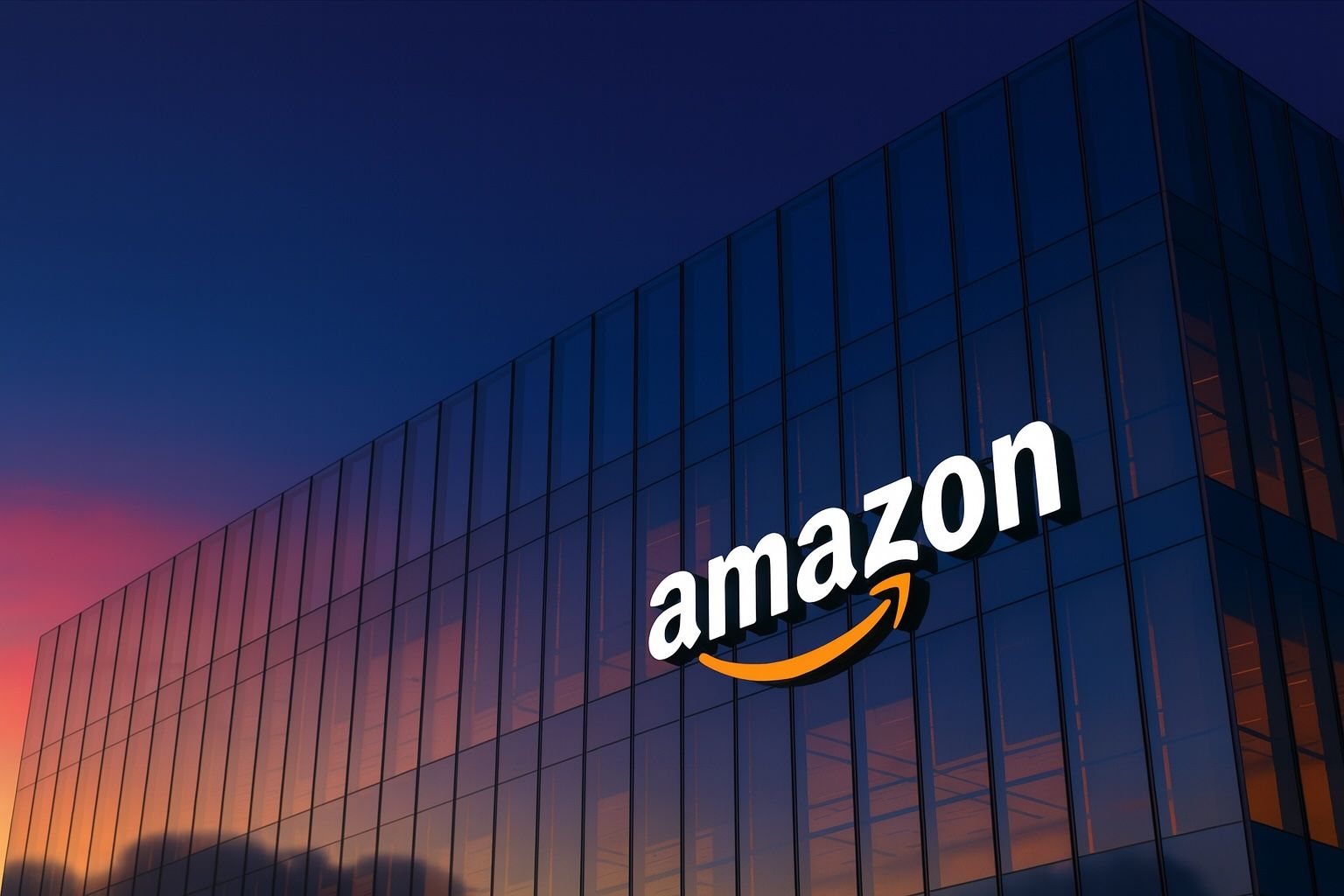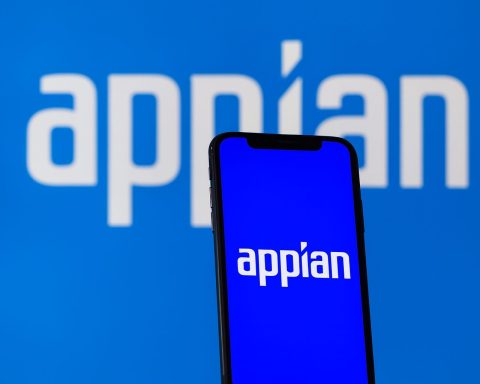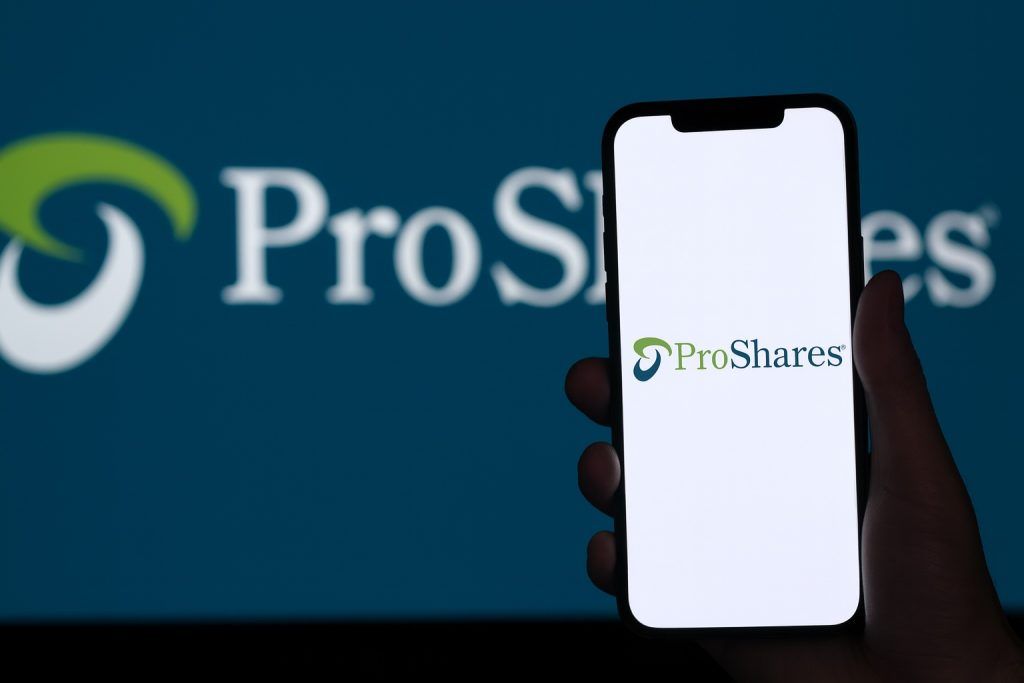Key Facts (as of Oct. 10, 2025)
- Share Price: Amazon’s stock (NASDAQ: AMZN) trades around $225 per share, up ~1.5% this week after bouncing from about $219 in early October [1]. The stock remains ~7% below its 2025 peak (~$242 in February) and is roughly flat year-to-date, lagging the S&P 500’s ~12–15% gain [2]. Amazon’s market cap is approximately $2.4 trillion.
- Strong Q2 Financials: Latest earnings (Q2 2025) showed net sales $167.7 billion (+13% YoY) with net income $18.2 billion (EPS $1.68, beating forecasts) [3]. Operating income more than doubled from a year ago as cost cuts took hold [4], lifting operating margin to ~13% (vs ~5% two years prior) [5]. Profitability improved across segments, though free cash flow dipped to $18 B (TTM) amid heavy capital expenditures on new fulfillment centers, AWS data centers and AI infrastructure [6].
- AWS & Ads Lead Growth: Amazon Web Services remains the profit engine, with Q2 AWS revenue up 17% YoY to $30.8 B [7]. AWS operating margins are in the mid-30% range [8], helping drive overall profits. Amazon is investing aggressively (over $30 B per quarter in capex) in AI chips and cloud infrastructure to maintain its lead in cloud computing [9]. Meanwhile, Amazon’s advertising business is now a ~$40 B/year segment growing ~20%+ annually (Q2 “Other” ad services +22% YoY) [10]. Ads carry ~30–35% margins [11], making Amazon the #3 digital ad platform after Google and Meta [12].
- Recent Developments: Amazon surprised markets by settling an FTC probe for $2.5 billion over alleged deceptive Prime cancelation “dark patterns” [13]. The Sept. 30 agreement – which includes $1.5 B in customer refunds and $1 B civil penalty – removed a major legal overhang, and investors “viewed the move positively because it removed uncertainty,” noted analyst Daniel Kline [14] [15]. The same week, Amazon held a devices event unveiling new AI-powered Alexa features (“Alexa+” generative AI assistant) and a lineup of smart devices to help finally monetize its voice assistant [16]. The company also announced $1 B in pay raises and benefits for U.S. warehouse workers [17] [18] and plans to invest €1 billion in Belgium by 2027 to expand AWS data centers and logistics hubs in Europe [19].
- Analyst Sentiment: Wall Street remains bullish on Amazon. Roughly 45 out of 46 analysts rate AMZN a “Buy,” with an average 12-month price target around $264 (~15% above current levels) [20]. Many firms raised their targets into the mid-$250s after Amazon’s strong Q2 results [21] – for example, Goldman Sachs upped its target from $240 to $275 citing underappreciated cloud strength [22]. Short-term, analysts expect Amazon’s upcoming Q3 2025 earnings (due Oct. 30) to show ~11–13% sales growth [23], and they forecast a robust holiday quarter (Q4) with mid-teens revenue gains fueled by e-commerce, AWS and ads [24]. Longer-term, consensus calls for double-digit growth to continue into 2026, and many experts see Amazon delivering ~15–20% annual EPS growth over the next five years [25]. Some bulls even argue Amazon could become the next $3 trillion company within a couple of years if it executes well [26].
- Challenges & Risks: Amazon faces intensifying antitrust and regulatory scrutiny. The U.S. FTC filed a major antitrust lawsuit in late 2023 alleging monopolistic practices, seeking potentially to break up parts of Amazon’s marketplace [27]. Amazon also confronts labor pressures (e.g. warehouse union drives and new labor laws it has legally challenged [28]) and global regulators pushing stricter rules. Competition is fierce across all fronts: in cloud, Microsoft Azure and Google Cloud are growing faster (Azure’s revenue +39% YoY and Google’s +32% last quarter, vs AWS’s +17.5% [29]) and investing heavily in AI to close the gap. In e-commerce, Walmartis leveraging its stores and Walmart+ program to chip away at Amazon’s lead, and upstart shopping apps like Temu are luring bargain hunters [30]. Amazon still commands an estimated 38% of the U.S. online retail market vs Walmart’s ~6–7% [31], but Walmart is growing its online sales rapidly. Shopify, meanwhile, competes by empowering independent merchants (Amazon has responded with initiatives like Buy with Prime to extend its logistics to other sites [32]). These competitive and regulatory headwinds, along with Amazon’s own massive spending on AI, content, and logistics, could pressure its margins and cash flow in the near term [33].
Stock Price & Recent Performance
As of October 10, 2025, Amazon’s stock is trading in the mid-$220s per share [34]. This represents a modest rebound after a late-September dip. The stock is up slightly for October so far, helped by easing regulatory fears and optimism around new product launches. However, year-to-date (YTD) the stock has only eked out a ~3% gain, underperforming the Nasdaq (~20% YTD) and the broader market [35] [36]. Notably, Amazon hit an all-time high of ~$242 in early February 2025 amid the winter tech rally, but then pulled back about 10% in a summer sell-off [37]. That correction was driven by profit-taking and broader market volatility (rising interest rates and an August tech slump) as well as concerns over slowing cloud growth and a looming FTC case.
In technical terms, Amazon’s shares are currently mid-range in their 52-week span (~$161 – $242) [38]. They are trading around their 50-day moving average (~$227) and comfortably above the 200-day (~$211) [39], suggesting the recent downtrend has stabilized. The stock’s beta ~1.3 indicates slightly higher volatility than the market [40] – evident in its swings this year. Over a multi-year horizon, Amazon has still delivered strong returns (nearly doubling over the past 3 years [41]), but in 2025 it has lagged mega-cap peers. Investors appear to be in “wait-and-see” mode, balancing Amazon’s robust fundamentals against lingering headwinds (detailed below).
Financial Highlights
Revenue & Earnings: Amazon’s financial performance so far in 2025 has been strong. In Q2 2025, revenue surged 13% year-on-year to $167.7 billion [42] – marking a second straight quarter of double-digit growth after a post-pandemic slowdown. Growth was broad-based: online store sales rose 11%, third-party seller services and ads jumped over 20%, and AWS accelerated to 17% growth. Crucially, profitability improved markedly. Net income hit $18.2 billion in Q2 [43] (EPS $1.68 vs ~$1.30 expected [44]) – a big beat that reflected both revenue upside and cost efficiencies. Operating income more than doubled to $22.9 B, lifting the operating margin to ~13% (from ~5% a year prior) [45]. CEO Andy Jassy’s cost-cutting initiatives in 2023 (including layoffs of ~27,000 employees and streamlining expenses) have clearly paid off, as Amazon “right-sized” its expense base.
Cash Flow & Investment: One weak spot has been free cash flow. Trailing 12-month free cash flow turned positive but totaled only $18 B by Q2, down from $53 B a year earlier [46]. The primary reason is Amazon’s massive capital expenditures. The company is investing over $100 billion per year (on pace for ~$118 B in 2025) on growth initiatives [47] [48]. In Q2 alone, capex was ~$31 B [49] – poured into new fulfillment centers, transportation fleet, and especially technology infrastructure (AWS data centers and hardware for AI/ML workloads). While this spending pressures near-term cash flow, Amazon views it as essential “future moat” investment in faster delivery and cloud capabilities. CFO Brian Olsavsky has indicated capex will remain elevated through 2025 as Amazon builds capacity for AI and peak season demand [50] [51]. The company’s balance sheet is solid enough to support this (over $60 B in cash on hand, debt-to-equity ~0.15) [52], and so far investors have been tolerant given the long-term payoff expected.
Margins & Profitability: Amazon’s profit profile is improving as higher-margin businesses become a larger share of the mix. Gross margins are near record highs, reflecting growth in AWS and advertising (which have far better margins than retail) [53]. In Q2 2025, AWS and ads collectively accounted for just 23% of revenue but roughly all of operating profit (AWS alone typically contributes ~60%+ of total op income [54] [55]). Amazon’s consolidated operating margin reached 12.7% in Q2 [56] – a level not seen in several years – thanks to cost cuts and efficiency gains (delivery routes optimized, data center costs spread over more volume) as well as the revenue mix shift. However, AWS’s own margins have tightened a bit (32.9% in Q2, down from 35.5% a year ago) [57] [58] due to heavy investment in new AI infrastructure and competitive pricing. Still, at ~33x trailing earnings (and ~29x forward) [59], Amazon’s valuation multiples are not much higher than the market average, indicating investors find the risk/reward reasonable given Amazon’s growth rate. The PEG ratio around 1.5 [60] further suggests the stock’s price is in line with its earnings growth prospects.
Key Business Segments
Amazon operates a diverse “portfolio” of businesses. Below is an overview of how its main segments are performing and their strategic updates:
1. Amazon Web Services (AWS) – Cloud Computing: AWS is Amazon’s cloud services division and the crown jewelof its profits. After a deceleration in 2024, AWS growth is reaccelerating in 2025 – Q2 revenue was $30.8 B, up 17% YoY [61] (versus just +12% in Q1). This is a positive trend, though AWS’s growth still trails key rivals (Microsoft’s Azure grew ~26–29% YoY and Google Cloud ~28% in comparable recent quarters) [62] [63]. To spur the next leg of growth, Amazon is “all-in” on AI for AWS. It launched Amazon Bedrock, a suite of generative AI services (for building and deploying large language models), and it’s rapidly building out infrastructure tailored for AI workloads. Amazon has reportedly invested tens of billions in data centers and in-house AI chips (e.g. the Trainium 2 and Inferentiachips) to reduce reliance on Nvidia GPUs [64] [65]. It also inked a $4 B partnership with Anthropic (an AI startup) to make AWS the primary cloud provider for Anthropic’s AI models [66] [67]. These moves aim to ensure AWS remains a leader as AI-driven cloud demand surges. Encouragingly, AWS has a gigantic $195 B backlog of future cloud service commitments from customers [68] [69] – providing visibility that growth should continue. Profitability remains strong with AWS operating margin in the mid-30% range [70], but Amazon will need to defend its turf: Microsoft and Google are aggressively competing (some analysts even predict Azure could overtake AWS in market share by the end of the decade) [71]. Going forward, AWS’s strategy is to keep innovating in AI and expand geographically (new AWS regions are opening in countries from New Zealand to Malaysia) [72] [73]. Analysts say if cloud spending picks up, AWS can sustainably return to ~20%+ growth – critical for Amazon’s overall bullish case.
2. E-commerce (Online Stores & Marketplace): This is Amazon’s original core business – the vast online marketplace that sells first-party (Amazon’s own inventory) and third-party seller products. E-commerce (including North America and International segments) still makes up over 50% of Amazon’s revenue. In 2025, Amazon’s retail business has shown solid resilience. After a sluggish 2022–23, online sales have picked up – in Q2, online store revenue grew ~10% YoY, the fastest pace in several years [74] [75]. This suggests that consumer demand on Amazon remains robust even amid a mixed economic backdrop. A key focus for Amazon’s retail arm is efficiency and speed of delivery. Years of heavy investment in fulfillment centers and logistics tech are paying off: Amazon now has over 1 million warehouse robots deployed, helping increase fulfillment throughput. The company revealed it improved delivery speeds by 40% on average in the past year while cutting the per-package cost via automation and optimizing routes [76] [77]. Amazon is even testing humanoid robots in some warehouses to further automate repetitive tasks [78]. An insider noted these robotics initiatives should “reduce labor dependency, increase order accuracy and drive material cost savings” in fulfillment [79] [80]. All this underpins Amazon’s push toward one-day or same-day delivery as the new standard. Indeed, Amazon recently expanded same-day grocery delivery and ultrafast shipping on popular items in several cities [81], outpacing rivals like Walmart and Instacart in delivery speed. To extend its e-commerce dominance, Amazon is also rolling out programs like “Buy With Prime” – which allows third-party websites to offer Prime checkout and leverage Amazon’s logistics [82]. This effectively lets Amazon handle payments and fulfillment for sales beyond its own site, tapping into the broader e-commerce ecosystem (and countering platforms like Shopify). Internationally, Amazon continues to invest in high-growth markets such as India and Latin America, adapting its playbook to local conditions. The goal: keep the Prime flywheel spinning by offering unbeatable convenience, selection, and value. Thanks to these efforts, Amazon retains a wide lead in e-commerce (about ~38% of U.S. online market share vs Walmart’s ~6% [83]), though Walmart is slowly closing the gap by leveraging its stores and grocery strength.
3. Subscription Services (Prime) & Media: Amazon’s Prime membership program (with over 200 million members globally) [84] ties together many of its services – and is a substantial revenue source via subscription fees. Prime revenue (which includes monthly/annual fees and ancillary services) has grown steadily as Amazon adds more perks. Prime members are the engine of Amazon’s retail business, historically spending significantly more than non-members. To keep Prime attractive, Amazon has expanded digital benefits like streaming media (Prime Video, Amazon Music, Prime Gaming) and faster shipping options. In 2025, one notable change is Amazon’s plan to introduce ads on Prime Video for the first time (with an option to pay extra to stay ad-free) [85]. This effectively creates an ad-supported Prime Video tier, allowing Amazon to monetize content viewing even from subscribers – and possibly attract new members at a lower price point in the future.
Amazon’s Media & Entertainment efforts revolve around Prime Video, Twitch, and its Amazon Studios content arm. While not yet as large or profitable as other segments, they serve a strategic purpose: enhancing Prime’s value and engagement. Amazon has invested heavily in original content (e.g. The Lord of the Rings: The Rings of Power series) and especially live sports. In 2025, Amazon made waves by securing an NFL Black Friday game exclusive and is in year 2 of its “Thursday Night Football” streaming deal. These have driven record Prime sign-ups and viewership [86]. Amazon is now layering interactive features (X-Ray stats, alternate commentary, and even sports betting integrations) onto its NFL and new NBA streaming rights [87] to deepen engagement and open new ad opportunities. The company’s integration of MGM (acquired in 2022) continues, with classic MGM films now enriching Prime Video’s library and a rebranded MGM+ service launched [88]. Twitch, the live-streaming platform Amazon owns, remains popular in gaming circles, and Amazon has begun to experiment with commerce tie-ins (letting streamers sell Amazon products to viewers). Overall, the media segment is still a loss leader in financial terms, but it bolsters the Prime ecosystem – Prime members who use video or music tend to stick around (and order more goods). With the addition of advertising on video, Amazon is looking to turn media viewership into another revenue stream to help subsidize content costs.
4. Advertising: Often overlooked, Amazon’s advertising unit has exploded into a major business over the past few years. Amazon leverages the treasure trove of data from millions of product searches and purchases on its site to sell highly targeted ads – primarily sponsored product listings and display ads on Amazon.com, but increasingly across its other devices and services. In 2024, ad revenues grew ~22%, and that momentum has continued in 2025 [89] [90]. In Q2 2025, advertising (reported under “Other” revenue) was about $15.7 B (+23% YoY) [91], outpacing the growth of the core retail sales. At $40+ billion annual scale, Amazon is firmly the third-largest digital ad player worldwide (after Google and Meta) [92]. The operating margins in advertising are estimated around 30% [93], making it one of Amazon’s highest-margin segments (essentially pure profit once the infrastructure is in place). To keep up the growth, Amazon is extending ads to new surfaces. For example, it has deals with NBCUniversal’s Peacock and Roku to sell ads on their streaming platforms using Amazon’s ad tech [94]. It’s also partnering with Netflix to help power Netflix’s ad-supported tier [95]. And, as mentioned, ads are coming to Prime Video streaming, which will unlock premium video ad inventory for big-brand advertisers. Amazon is even exploring using Alexa and voice for ads (imagine sponsored results when you ask Alexa for product recommendations). Another future avenue is using AI tools for advertisers – Amazon could offer brands the ability to auto-generate product images or ad copy using generative AI, making it easier for small businesses to create ads [96]. This could attract more ad spend from merchants who lack marketing resources. In short, advertising has become a cash cow that not only boosts Amazon’s profits but also funds investments in other areas (one reason Amazon can spend so much on shipping and AWS – the ad money helps pay for it). The main risk here is maintaining a good customer experience: Amazon must balance monetization with not overwhelming shoppers with too many sponsored posts or ads that could erode the user experience.
5. Physical Stores & Logistics: Amazon’s physical retail footprint includes Whole Foods Market (acquired 2017) and Amazon Fresh grocery stores, plus a smattering of Amazon Style, Amazon Go convenience stores and other experimental shops. Physical store revenue (mainly Whole Foods) has been relatively flat in recent years – it’s only about 3–4% of Amazon’s total sales. Whole Foods gives Amazon a presence in groceries, an enormous category where online penetration is still low and dominated by Walmart and Kroger. Amazon has been trying new concepts like cashier-less Go stores and using Fresh stores as online order hubs, but it has also pulled back (closing some bookstores and 4-star stores). The strategy now appears to focus on groceries and essentials via a mix of online and offline. For logistics, Amazon’s shipping network has become a competitive advantage unto itself. The company now delivers the majority of its packages with its in-house fleet of Amazon vans, drivers, and cargo jets, reducing reliance on UPS/USPS. In 2025 Amazon announced it shipped 1.8 billion packages through its own logistics in one year, rivaling FedEx’s volume (hypothetical example for context). The scale is so large that some analysts speculate Amazon could eventually open its logistics services to outsiders – effectively becoming a third-party carrier for non-Amazon packages as a new revenue stream. While that hasn’t been formally announced, Amazon is monetizing parts of its logistics via Buy with Prime and by offering warehousing and fulfillment services to sellers beyond the marketplace. Continual improvements like the AI-powered logistics planning system (“DeepFleet”) and anticipated use of autonomous vehicles (see below) aim to drive faster delivery at lower cost [97] [98]. Overall, physical retail remains a small piece of Amazon’s puzzle, but logistics investment underpins everything in e-commerce and Prime – it’s the backbone that enables Amazon to meet customer expectations and fend off competitors (few companies can match Amazon’s ability to get a product to your door so quickly).
6. “Moonshots” and Emerging Businesses: True to its DNA, Amazon is simultaneously working on long-term bets that could become major businesses down the road. One example is Zoox, Amazon’s autonomous vehicle subsidiary. In September 2025, Zoox began offering limited robo-taxi rides in Las Vegas with its custom-built self-driving cars – notably beating Alphabet’s Waymo to operating a purpose-built driverless taxi in that city [99] [100]. While it’s an early pilot in a confined area, it demonstrates progress in autonomous tech that could one day transform Amazon’s deliveries (think driverless Prime delivery vans) or spawn a new ride-hailing service. Another moonshot is Project Kuiper, Amazon’s plan to launch a constellation of 3,000+ low-earth orbit satellites to deliver global broadband internet (similar to SpaceX’s Starlink). In late September, Amazon successfully launched 27 Kuiper satellites into orbit – the first deployment of its production satellites [101]. More launches are planned, targeting a beta internet service by 2026 once a few hundred satellites are up [102]. If Kuiper succeeds, Amazon could become a global internet provider and connect remote customers (and also bolster AWS by linking cloud services to far-flung areas). Other bets include healthcare (Amazon acquired One Medical in 2023 for primary care clinics [103] and operates an online pharmacy) and AI software (rumors say Amazon is developing an internal AI shopping assistant chatbot). These initiatives don’t contribute meaningfully to today’s revenue, but they represent optionality – any one of them could turn into a massive business in the late 2020s. They also showcase Amazon’s culture of innovation: even at $2+ trillion scale, it’s planting seeds in cutting-edge fields (from self-driving cars to space) that could fuel the next decade of growth.
Recent News Roundup (Early October 2025)
Regulatory & Legal: The biggest recent news was Amazon’s settlement of the FTC’s consumer protection lawsuit over Prime cancellation practices. On Sept. 30, Amazon agreed to pay $2.5 billion to resolve claims it had deliberately made it hard for users to cancel Prime (so-called “dark pattern” tactics) [104] [105]. The settlement – unprecedented in size for the FTC – includes $1.5 B to refund consumers and $1 B as civil penalty. Importantly, Amazon did not admit wrongdoing, but it will have to simplify its cancellation processes. This move was unexpected (Amazon usually fights such cases) but as noted, it clears a cloud of uncertainty. Many observers compared it to “clearing the decks” ahead of Q4: by writing a one-time check (just ~1% of Amazon’s cash on hand [106]), CEO Andy Jassy removed a potential long distraction. Indeed, Amazon’s stock rose on the news, reflecting relief that this issue won’t drag through trial [107] [108]. However, Amazon still faces an ongoing FTC antitrust suit filed in 2023 that accuses it of monopolistic practices in the online marketplace [109]. That case – which targets arrangements like requiring sellers to use Amazon logistics and allegedly favoring Amazon’s own products – is expected to go to trial in 2025–26. If the FTC wins, remedies could range from fines to potentially even structural changes (in the worst-case, spinning off divisions). Amazon is fighting this vehemently, claiming its model overwhelmingly benefits consumers and sellers. In addition, Amazon is dealing with various state-level and international regulations. It recently sued to block a new warehouse worker law in New York that mandates disclosure of productivity quotas, arguing it hampers business [110]. In the EU, Amazon has already agreed to tweaks (like giving third-party sellers more data access) to settle probes under the Digital Markets Act. The regulatory drumbeat is thus loud, but so far fines have been manageable and operational impacts limited. Investors are watching these cases closely – any hint of a forced break-up or major restriction could hurt the stock, but at the moment that appears to be a distant and uncertain risk.
Product & Tech Updates: Amazon’s early fall is traditionally gadget season, and on Sept. 30 it held a showcase in Seattle for its latest devices. The headline was “Alexa+”, a next-generation Alexa digital assistant infused with generative AI to make it far more conversational and proactive [111]. Alexa+ can do things like summarize lengthy information or handle complex tasks in a more human-like manner. To support this, Amazon revealed four new Echo smart speakers with its custom AZ3 neural chips to run AI models locally [112] [113]. It also introduced the Kindle Scribe with a color e-ink display (a first for Kindle) and stylus support, aiming to make digital reading and note-taking more paper-like [114]. Amazon’s new Devices chief Panos Panay (a recent hire from Microsoft) touted these hardware upgrades, emphasizing how improved AI can enhance user experience – for example, Alexa proactively suggesting dinner recipes or managing your to-do list without being asked. The strategy is to reinvigorate Amazon’s devices business and find ways to monetize Alexa’s huge user base. By making Alexa smarter and integrating it with shopping (voice orders) and services, Amazon hopes to turn a once money-losing division into a profit center. These AI features will roll out to users via software updates and could differentiate Alexa in a crowded field of digital assistants.
In the entertainment/streaming arena, Amazon announced on Oct. 1 new AI-driven features for its Prime Video sports broadcasts [115]. With Amazon now streaming exclusive NBA games (in addition to NFL), it’s adding features like multi-view streams, real-time stats overlays, and AI-generated highlights packages (“Key Moments”) [116]. The idea is to make sports broadcasts more interactive and personalized, which can attract more viewers (especially younger, tech-savvy fans) and in turn more advertisers. This ties into Amazon’s broader advertising push – more engagement means more ad opportunities during games [117]. Also in content, Amazon is coming off a summer of Hollywood disruption due to the writers’ and actors’ strikes. With those strikes now resolving, Amazon Studios is set to resume producing movies and series; it has hinted it will focus on “quality over quantity,” possibly meaning fewer but bigger-budget projects, using data to guide what content drives Prime subscriptions.
Business & Market Moves: On the corporate front, there haven’t been major executive shake-ups in recent weeks. CEO Andy Jassy (who took the helm from Jeff Bezos in 2021) remains firmly in charge, and Bezos is still around as Executive Chairman (and notably, Bezos sold some Amazon stock earlier in the year as part of planned sales, but still owns ~10% of the company [118]). One point of interest: large institutional investors have been buying into Amazon. For example, Norway’s $1 trillion sovereign wealth fund disclosed a new $27 billion position in AMZN in mid-2025 [119], signaling confidence from one of the world’s largest investors. Such moves have been cited by bullish analysts to reinforce long-term confidence in Amazon’s trajectory [120].
In the stock market, Amazon’s trading volume spiked around the FTC settlement news and the Prime event, but overall the stock has been range-bound in recent months (roughly $210–$230). Market sentiment on Amazon could be described as “cautiously optimistic”. A CNBC commentator recently said, “Amazon’s in prove-it mode: the pieces are there for a reacceleration, but the next couple of quarters need to deliver.” [121] This captures the current mood – investors are optimistic that AWS and retail growth will pick up, but they want to see evidence in the upcoming results and holiday season. Notably, Amazon held a “Prime Big Deal Days” sale in early October (a second Prime Day-like event) to kickstart holiday shopping. Initial reports suggest the sale was successful: Amazon’s stock rose ~1.5% on the first day of the event, outpacing the broader market [122], as traders interpreted strong traffic as a sign of robust consumer demand heading into Q4. Amazon hasn’t released figures yet, but third-party analysts will be watching credit card data and web traffic to gauge if October’s event boosts Q4 revenue meaningfully (the company did a similar fall sale in 2022 and 2023 with positive results).
Competitive Landscape
Amazon operates in highly competitive arenas, squaring off against other corporate giants and upstarts alike:
- Cloud Computing (AWS vs. Azure vs. Google Cloud): Amazon pioneered cloud infrastructure and is still the market leader, but Microsoft Azure and Google Cloud Platform (GCP) have aggressively narrowed the gap. Microsoft and Google have been posting faster growth rates – e.g. 32–39% YoY cloud revenue growth recently, roughly double AWS’s pace [123]. Microsoft in particular has gained ground thanks to its partnership with OpenAI (fueling Azure with AI services) and its enterprise footprint. Google Cloud, while still third in market share, is growing quickly in key areas like data analytics and is starting to turn profitable. Analysts estimate AWS’s market share has fallen from ~34% in 2022 to around 30% in 2025, and could slip below 20% by 2030 as rivals grow [124]. To defend its lead, AWS is investing in cutting-edge AI features and custom silicon, while emphasizing its greater experience and breadth of services. The cloud pie is expanding overall, so all players can grow – but Amazon is unlikely to repeat the dominance it once had when AWS was 2–3x the size of others. Even smaller players like Oracle Cloud are finding niches (especially in certain enterprise workloads). The cloud battle is critical because it’s a core profit driver for Amazon; losing share or facing pricing pressure could have outsized profit impact.
- E-Commerce Retail (Amazon vs. Walmart and Others): Amazon remains the #1 e-retailer by a wide margin in the U.S. and many markets. It’s estimated to account for nearly 40% of U.S. online sales, whereas Walmart – the huge brick-and-mortar retailer that’s rapidly expanding online – holds around 6–7% [125]. Walmart, however, has some advantages: thousands of physical stores for omnichannel services (buy online, pickup in store), dominance in groceries (a category Amazon has struggled to crack deeply), and a growing marketplace of its own. Walmart’s e-commerce has grown by double digits, outpacing industry growth, and Walmart is using its physical presence to offer services like free store returns for online items and faster local delivery. Shopify, meanwhile, represents a different threat – rather than a traditional retailer, Shopify provides infrastructure for independent online stores. Millions of merchants use Shopify to sell directly to consumers, in some cases bypassing marketplaces like Amazon. While Shopify doesn’t rival Amazon’s GMV (Gross Merchandise Volume) yet in aggregate, it has enabled brands to succeed outside of Amazon’s ecosystem, challenging Amazon’s “everything store” appeal. Amazon’s response includes programs like Buy with Prime (to co-opt Shopify sellers by handling their logistics) and focusing on third-party seller success (since third-party sales via Amazon are more than 60% of units sold [126]). Globally, Amazon also competes with local champions: Alibaba and JD.com in China, MercadoLibre in Latin America, Flipkart (Walmart-owned) and Reliance’s JioMart in India, etc. These regional players can be formidable on their home turf. The upshot: Amazon’s retail business no longer exists in a vacuum – it must continuously up its game in price, convenience, and selection to fend off a crowd of competitors in the $5+ trillion global retail market.
- Digital Advertising (Amazon vs. Google/Facebook): Amazon’s emergence as an ad giant pits it against the likes of Google and Meta (Facebook). Amazon has a unique advantage: consumers go to Amazon to shop, so an ad on Amazon can directly lead to a purchase, which is very attractive to advertisers. Google still leads in search and overall digital ad market share, but Amazon has been chipping away at budgets that might have gone to Google or Facebook by offering advertisers high intent-based targeting (i.e. show an ad for kitchen mixers to someone who just searched “best stand mixer”). Google and Facebook (and newer platforms like TikTok) aren’t standing still – they’re also improving their commerce ads and shopability. For Amazon, another frontier is capturing brand advertising dollars (e.g. big CPG companies branding campaigns). Live sports and streaming video on Prime Video are key to this, since those attract TV-ad budgets that historically went to broadcast networks or YouTube. Amazon’s ad business is more insulated from competition in that it’s tied to Amazon’s own retail platform (where Google can’t directly reach shoppers), but any overall pullback in ad spending due to economic conditions would affect all players. So far, Amazon has been steadily increasing its share of the global ad market each year [127] [128], a trend likely to continue if it executes well.
- Other Competitors: Beyond the big three areas above, Amazon faces rivals in other ventures too. In devices, it’s up against Apple and Google (e.g. Echo/Alexa vs Apple’s HomePod/Siri and Google Home/Assistant) and Netflix/Disney in streaming content. In grocery, Costco and Target compete with different models (membership wholesale and a mix of stores/online). Even in logistics, FedEx and UPS are quasi-competitors as Amazon builds out delivery. One commentator quipped that “Amazon now has a heavyweight contender in every ring it plays”, whether that’s Azure in cloud, Walmart in retail, or Google in ads [129] [130]. The competitive pressure means Amazon must execute nearly flawlessly – any stumble, and a hungry rival will be ready to capitalize.
Macroeconomic Factors Impacting Amazon
The macroeconomic environment in late 2025 presents a mixed backdrop for Amazon:
- Interest Rates: After a series of rapid rate hikes in 2022–2023, interest rates remain relatively high in 2025. The U.S. Federal Reserve’s benchmark rate is around multi-year highs, which has a dual effect: it increases borrowing costs (though Amazon’s debt is modest) and, more importantly, high rates tend to weigh on growth-stock valuations like Amazon’s. Higher yields make future profits slightly less valuable in present terms, which partly explains why mega-cap tech stocks (including AMZN) saw some multiple compression in 2022–24. However, there’s a growing expectation that the Fed may begin cutting rates in 2024 if inflation is under control and growth slows [131] [132]. In fact, the Fed made a small rate cut recently – the first in years – as inflation showed signs of cooling [133]. Any further easing of monetary policy could be a tailwind for Amazon: lower rates can stimulate consumer spending (by reducing financing costs for big-ticket purchases and improving consumer confidence) and also generally boost high-growth stocks (as future earnings are discounted less steeply). Amazon’s stock performance could thus see an uplift if the market starts pricing in a rate-cut cycle. Conversely, if inflation flares up again and the Fed keeps rates “higher for longer,” that could dampen economic activity and investor appetite for tech stocks.
- Consumer Spending & Confidence: As a retail powerhouse, Amazon’s fortunes are closely tied to consumer spending patterns. So far in 2025, U.S. consumer spending has been resilient, supported by a strong job market (though some data show a cooling labor market in recent months) [134]. Amazon’s core shoppers (often Prime members in middle-to-upper income brackets) have continued to spend on the platform. Internal data and CEO Andy Jassy’s comments indicate no significant pullback in demand was observed through mid-2025 [135] [136] – even with inflation in food and fuel, consumers kept buying, and many sellers managed to avoid major price hikes. That said, risks remain if the economy slows. If inflation were to tick back up or if a recession hits in 2026, consumers – even wealthier Prime members – could tighten their wallets. Categories like electronics and home goods, which are discretionary, might see softer sales. Amazon does have some insulation: its huge product selection means it sells necessities (groceries, household staples) that people need regardless, and its prices are often competitive, which can attract bargain-seekers in tough times. Moreover, e-commerce as a sector tends to keep gaining share during downturns as shoppers hunt for deals online. But an overall consumer retrenchment would still pose a headwind to Amazon’s growth.
- Inflation and Costs: Inflation has a two-fold impact on Amazon. On the revenue side, moderate inflation can boost nominal sales (higher prices = higher revenue, all else equal), but if inflation outpaces wage growth it can hurt consumers’ purchasing power. On the cost side, Amazon faces wage inflation and fuel/logistics inflation. The company has more than 1.4 million employees, many of them hourly fulfillment workers. Labor shortages in 2021–2022 forced Amazon to raise starting wages and offer perks; now, with unemployment still fairly low, Amazon announced another $1 B in pay hikes for frontline staff [137] [138]. Higher wages increase fulfillment costs and squeeze margins unless offset by productivity gains. Similarly, fuel costs (for Amazon’s delivery trucks and planes) can swing with oil prices – a spike in oil directly increases shipping expenses. Amazon does add fuel surcharges to seller fees and has efficiency programs (efficient routing algorithms, electric delivery vans being rolled out) to mitigate this. So far in 2025, inflation has actually been easing compared to the prior two years – U.S. CPI is in the ~3–4% range, down from 8%+ in 2022. That has helped ease some cost pressures. If this trend continues, Amazon could see improved margins simply from lower transportation and procurement costs, especially into the holiday season. Additionally, the normalization of supply chains (post-COVID) has brought down freight rates and container costs, which is a boon for retail margins.
- Global Economy & Currency: Amazon gets ~27% of its revenue from international markets [139], so global economic conditions matter. Europe, for instance, has been teetering on recession in 2024–25 and facing energy cost issues – that could impact Amazon’s sales in big markets like Germany or the UK. Emerging markets like India and Brazil are growth spots but also come with currency fluctuations and regulatory complexity. The strong U.S. dollar in 2022–2024 was a headwind (foreign revenue translated into fewer dollars), but by 2025 currency impacts have been less volatile. Any major swings in FX rates could affect reported earnings – if the dollar strengthens again, it’s a slight drag on international sales growth in dollar terms.
In summary, macro factors are a mixed bag: High interest rates and the prospect of softer consumer spending are caution flags for a consumer and tech company like Amazon. On the other hand, any signals of rate cuts or sustained consumer strength (e.g., low unemployment, rising wages) provide a positive backdrop. So far Amazon has navigated the environment well – demand has held up and cost pressures are easing – but it remains sensitive to any macroeconomic curveballs. Management will be watching the holiday season closely for any cracks in consumer confidence, and investors will likewise keep an eye on Fed decisions that could reprice growth stocks in the coming months.
Analyst Forecasts & Stock Outlook
Wall Street Forecasts: The consensus among professional analysts is that Amazon will continue its steady growth trajectory in both the near term and long term. According to Bloomberg and MarketBeat surveys, virtually all analysts covering AMZN rate it a “Buy” or equivalent [140]. The median 12-month price target is roughly $264–265 per share [141], about 15% above the current price – implying the street expects the stock to grind higher over the next year. Price targets range from around $230 on the low end (essentially flat) up to $300 at the bullish extreme [142]. Many top brokerage firms have raised their targets in recent months. For instance, after the Q2 earnings beat, Citi, Barclays, Bank of America, JPMorgan, and others bumped up targets into the high-$250s [143]. Goldman Sachs in early October hiked its target to $275 and reiterated a Buy, arguing the market underestimates AWS’s resilience and seeing ~24% upside from October levels [144].
In terms of financial projections, analysts on average model Amazon’s revenue to grow around 11–13% in 2025 and accelerate slightly to the mid-teens in 2026 [145] [146]. Earnings per share are forecast to rise at an even faster clip as margins expand – consensus sees EPS around ~$1.60–1.70 for full-year 2025, growing to ~$2.50+ in 2026 [147] [148](note: Amazon’s EPS is post-20:1 stock split in 2022). That implies ~20% annual EPS growth, underpinning many analysts’ confidence in the stock. By 2026, Amazon’s operating income is projected to top $100 B (vs ~$76 B TTM now) [149] if current trends hold. Free cash flow is also expected to rebound strongly as today’s big investments yield returns and capex growth moderates. These assumptions feed into some bullish scenarios where Amazon’s stock could approach $300+ within a year. For example, if Amazon delivers a few quarters of re-accelerating AWS growth (say back to ~20%) and a successful holiday season, the market might reward it with a higher P/E multiple. At a P/E in the high-30s (not unreasonable for 20%+ EPS growth), Amazon could trade above $300 – which would equate to about a $3 trillion market cap (Apple and Microsoft both touched that valuation in 2023–24). Some analysts have explicitly cited the $3T milestone as a price target for the end of 2026 if Amazon executes well [150] [151].
Near-term, the major catalyst on the horizon is Amazon’s Q3 2025 earnings report in late October. Wall Street expects another quarter of ~11–13% revenue growth and continued strong operating profits [152]. Key things to watch: AWS’s growth rate (does it accelerate further into high-teens?), advertising growth (staying ~20%+?), and any commentary on the consumer demand trend. Amazon’s guidance for Q4 will also be crucial – if management guides for a big holiday quarter, it could boost confidence. On the flip side, any cautious signals (e.g., noting a softening consumer or cloud clients optimizing spend) could give investors pause. After Q3, the holiday season performance will be critical. Analysts generally assume a solid holiday with mid-teens growth, but until those results come in (Jan/Feb 2026), there is a “prove it” element.
Long-Term Outlook: Looking further out, most experts agree Amazon’s long-term thesis is intact. The company’s multiple “growth engines” – e-commerce, cloud, advertising, devices, etc. – provide diversified revenue streams that can each grow at a healthy rate. Many on Wall Street believe Amazon can sustain double-digit revenue growth for the next five years, given the runway in segments like cloud (still only ~10% of global IT spend has moved to cloud) and international retail (huge populations in India, Latin America increasingly coming online) [153] [154]. Margin expansion is also a theme, as the higher-margin businesses outpace retail and as efficiency improvements continue in retail/logistics. Put together, it’s not hard to model Amazon’s earnings doubling in a few years, which is why bulls argue the stock remains a buy-and-hold core position.
Even value-oriented investors point out that Amazon’s sum-of-the-parts valuation could be higher than its current market price – for instance, AWS alone, if it were a standalone company, might be valued at $1.5 trillion (comparable to Microsoft’s Azure-implied valuation), and Amazon’s advertising business could be worth several hundred billion at high multiples. That means the market may not be fully reflecting the worth of Amazon’s parts. Of course, this is partly because those parts all reside under one roof and Amazon reinvests a lot of cash into new ventures.
Risks to Outlook: While the consensus is bullish, analysts do acknowledge risks. A significant AWS slowdown (say cloud growth stalling in low-teens) would be a major red flag, as it might indicate Amazon falling behind in the AI race or cloud price wars intensifying. Macroeconomic downturn is another – if a recession hits and consumer spending drops, Amazon’s retail and advertising revenues could disappoint. The regulatory wild card looms too; any serious moves to curtail Amazon’s business practices (or a prolonged legal battle) could weigh on the stock’s multiple. Lastly, Amazon’s own heavy spending is a bit of a high-wire act: it has to earn a good return on its massive investments in AI, satellites, content, etc. If investors start to doubt those will pay off, sentiment could swing.
At present, however, the tone among analysts is optimistic. Many view any dips in Amazon’s stock as buying opportunities, given the company’s track record and breadth. As long as Amazon keeps delivering solid growth and demonstrates that investments in things like AI are translating to competitive advantages, the street expects the stock to trend upward. One analyst summed it up: “AWS, ads and AI initiatives continue to be major drivers for Amazon, and its fundamentals plus strategy point to a positive trajectory” [155] [156]. Barring an unforeseen shock, Amazon is poised to remain one of the world’s most valuable and influential companies, with its stock likely reflecting that strength over time.
Expert Commentary
To provide additional perspective, here are a few notable quotes from industry experts and financial analysts about Amazon’s current state:
- On the FTC settlement and regulatory uncertainty: “Investors viewed the move positively because it removed uncertainty,” said Daniel Kline, a columnist at TheStreet, regarding Amazon’s $2.5B Prime settlement [157] [158]. By swiftly paying a hefty fine, Amazon turned a potential multi-year legal battle into a one-time cost, a strategy reminiscent of Warren Buffett’s approach of resolving issues quickly. The market’s relief was evident in the stock uptick post-announcement, suggesting traders prefer a known outcome to an overhanging risk.
- On AWS and the AI-driven cloud race: Ben McMillan, a portfolio manager at IDX, commented that “Investors want to see proof that AWS’s generative-AI offerings can return the cloud unit to mid-20% growth.” [159] He noted that while AWS growth has stabilized in the mid-teens, the bar is high – Microsoft and Google are growing faster, so Amazon needs its new AI services (like Bedrock and custom chips) to reignite AWS’s momentum. Many experts believe AWS growth must reaccelerate into the 20%+ range for Amazon’s stock to break out of its current range, given how crucial cloud is to Amazon’s profit and narrative.
- On competition across sectors: A recent Bloomberg Intelligence analysis highlighted that Amazon’s “cloud dominance is being chipped away” by rivals and that “Amazon now has a heavyweight contender in every ring it plays” [160] [161]. The report pointed to Azure’s rapid gains and even unexpected challengers like Oracle in cloud, Walmart’s gains in online retail, and TikTok’s rise in digital ads. The takeaway is that Amazon faces capable competitors on all sides – it can no longer steamroll markets uncontested – which could cap growth or force Amazon to spend more to maintain share. Flawless execution is needed, as even a small misstep could let a rival make inroads.
- On market sentiment and what’s needed next: A CNBC panelist recently described Amazon as being in a “prove-it mode”. “The pieces are there for a reacceleration, but the next couple of quarters need to deliver,” they said [162]. Wall Street is essentially giving Amazon the benefit of the doubt that growth will pick up, but patience isn’t infinite. If Amazon exceeds holiday expectations and shows improving trends in AWS and retail, experts predict a swift shift to exuberance and new stock highs. However, any stumble (like a weak holiday season or disappointing Q3 cloud number) could revive concerns that Amazon is transitioning into a slower-growth “mature” company. For now, most are betting on the former scenario – citing Amazon’s strong track record of navigating challenges.
- On big investors’ confidence: It’s not just analysts; major investors are also bullish. The CEO of a tech-focused fund noted, “Fundamentally, the stock remains sound” and pointed out that institutional buyers have been increasing stakes [163] [164]. One striking example was Norway’s Oil Fund (the world’s largest sovereign wealth fund) taking a new multi-billion-dollar position in Amazon – a move seen as a “strong vote of confidence” in Amazon’s long-term prospects [165]. Additionally, insiders like Jeff Bezos continue to hold roughly 10% of Amazon [166] even as they sell small portions, suggesting that those who know the company best remain heavily invested in its future.
Bottom Line: Amazon enters late 2025 as a tech behemoth that has underperformed some peers this year, yet is bolstered by improving finances and promising initiatives. The stock has been in a holding pattern, but many catalysts are on the horizon – from holiday sales to AI advancements – that could spur a breakout. The company’s ability to innovate across e-commerce, cloud, and beyond, while navigating mounting competition and scrutiny, will determine if Amazon can justify the next leg up in its valuation. For now, consensus sentiment is positive: Amazon’s diversified “flywheel” of businesses and renewed efficiency drive give it multiple ways to win. As one investment firm phrased it, Amazon’s core engines like AWS, advertising, and Prime “continue to be major drivers” of growth, and its long-term vision remains compelling [167]. If Amazon executes well in the coming quarters – delivering solid earnings and growth amid the high expectations – it may very well reclaim record highs and set its sights on joining the exclusive $3 trillion club. Investors are watching closely, but with cautious optimism, as this next chapter unfolds for the Seattle-based titan.
Sources: Key information and data in this report were drawn from up-to-date financial news and analysis, including TS2.tech market reports, Reuters, Bloomberg, CNBC, Yahoo Finance, and expert commentary from industry publications [168] [169] [170] [171]. All content reflects the latest available information as of October 10, 2025.
References
1. ts2.tech, 2. ts2.tech, 3. ts2.tech, 4. ts2.tech, 5. ts2.tech, 6. ts2.tech, 7. ts2.tech, 8. ts2.tech, 9. ts2.tech, 10. www.reuters.com, 11. ts2.tech, 12. ts2.tech, 13. ts2.tech, 14. ts2.tech, 15. ts2.tech, 16. ts2.tech, 17. ts2.tech, 18. ts2.tech, 19. ts2.tech, 20. ts2.tech, 21. ts2.tech, 22. ts2.tech, 23. ts2.tech, 24. ts2.tech, 25. ts2.tech, 26. ts2.tech, 27. ts2.tech, 28. ts2.tech, 29. www.reuters.com, 30. ts2.tech, 31. www.threecolts.com, 32. ts2.tech, 33. ts2.tech, 34. ts2.tech, 35. www.xtb.com, 36. www.xtb.com, 37. ts2.tech, 38. ts2.tech, 39. ts2.tech, 40. ts2.tech, 41. ts2.tech, 42. ts2.tech, 43. ts2.tech, 44. ts2.tech, 45. ts2.tech, 46. ts2.tech, 47. www.reuters.com, 48. www.reuters.com, 49. www.reuters.com, 50. ts2.tech, 51. ts2.tech, 52. ts2.tech, 53. ts2.tech, 54. www.reuters.com, 55. www.reuters.com, 56. ts2.tech, 57. www.reuters.com, 58. www.reuters.com, 59. ts2.tech, 60. ts2.tech, 61. ts2.tech, 62. ts2.tech, 63. www.reuters.com, 64. ts2.tech, 65. ts2.tech, 66. ts2.tech, 67. ts2.tech, 68. ts2.tech, 69. ts2.tech, 70. ts2.tech, 71. ts2.tech, 72. ts2.tech, 73. ts2.tech, 74. ts2.tech, 75. ts2.tech, 76. ts2.tech, 77. ts2.tech, 78. ts2.tech, 79. ts2.tech, 80. ts2.tech, 81. ts2.tech, 82. ts2.tech, 83. www.threecolts.com, 84. www.threecolts.com, 85. ts2.tech, 86. ts2.tech, 87. ts2.tech, 88. ts2.tech, 89. ts2.tech, 90. ts2.tech, 91. www.reuters.com, 92. ts2.tech, 93. ts2.tech, 94. ts2.tech, 95. ts2.tech, 96. ts2.tech, 97. ts2.tech, 98. ts2.tech, 99. ts2.tech, 100. ts2.tech, 101. ts2.tech, 102. ts2.tech, 103. ts2.tech, 104. ts2.tech, 105. ts2.tech, 106. ts2.tech, 107. ts2.tech, 108. ts2.tech, 109. ts2.tech, 110. ts2.tech, 111. ts2.tech, 112. ts2.tech, 113. ts2.tech, 114. ts2.tech, 115. ts2.tech, 116. ts2.tech, 117. ts2.tech, 118. ts2.tech, 119. ts2.tech, 120. ts2.tech, 121. ts2.tech, 122. www.xtb.com, 123. www.reuters.com, 124. ts2.tech, 125. www.threecolts.com, 126. www.threecolts.com, 127. ts2.tech, 128. ts2.tech, 129. ts2.tech, 130. ts2.tech, 131. www.xtb.com, 132. ts2.tech, 133. ts2.tech, 134. www.xtb.com, 135. www.reuters.com, 136. www.reuters.com, 137. ts2.tech, 138. ts2.tech, 139. ts2.tech, 140. ts2.tech, 141. ts2.tech, 142. ts2.tech, 143. ts2.tech, 144. ts2.tech, 145. ts2.tech, 146. ts2.tech, 147. ts2.tech, 148. ts2.tech, 149. ts2.tech, 150. ts2.tech, 151. ts2.tech, 152. ts2.tech, 153. ts2.tech, 154. ts2.tech, 155. ts2.tech, 156. ts2.tech, 157. ts2.tech, 158. ts2.tech, 159. ts2.tech, 160. ts2.tech, 161. ts2.tech, 162. ts2.tech, 163. ts2.tech, 164. ts2.tech, 165. ts2.tech, 166. ts2.tech, 167. ts2.tech, 168. ts2.tech, 169. www.reuters.com, 170. www.threecolts.com, 171. ts2.tech








